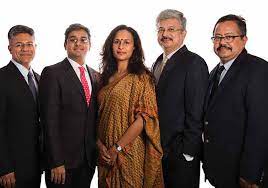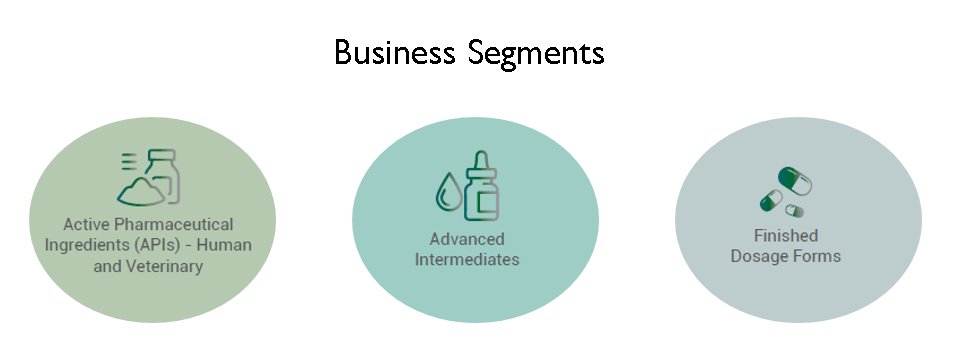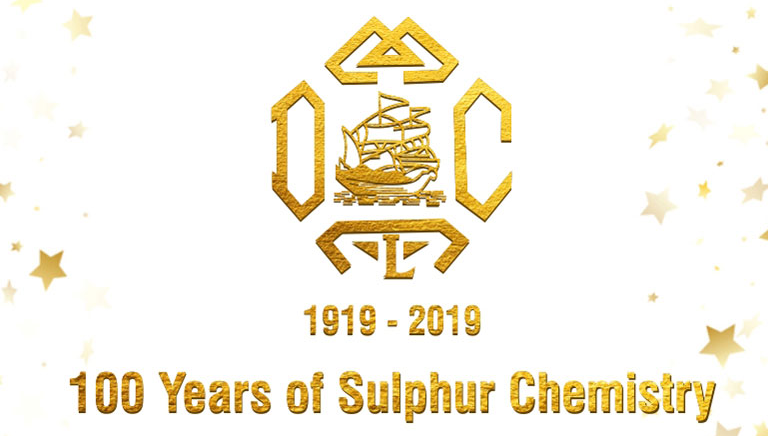
Cost leader in Animal Pharma
NGL Fine Chem 🐕🐕🦺🐶
#nglfinechem
Like and Retweet for better reach !
@unseenvalue @punitbansal14
A Thread 🧵
CMP - 2820
Topics Covered :
1. Company overview
2. Management
3. Business segments
4. Business strategy
5. Backward Integration
NGL Fine Chem 🐕🐕🦺🐶
#nglfinechem
Like and Retweet for better reach !
@unseenvalue @punitbansal14
A Thread 🧵
CMP - 2820
Topics Covered :
1. Company overview
2. Management
3. Business segments
4. Business strategy
5. Backward Integration
6. Revenue split
7. Products
8. Manufacturing facilities
9.R&D expenditure
10.Capex
11.Financials
12.Risks
1. Company overview
Established in 1981, NGL Fine Chem manufacturers and markets APIs, Intermediates and Finished Dosage forms for human and animal pharmaceutical products
7. Products
8. Manufacturing facilities
9.R&D expenditure
10.Capex
11.Financials
12.Risks
1. Company overview
Established in 1981, NGL Fine Chem manufacturers and markets APIs, Intermediates and Finished Dosage forms for human and animal pharmaceutical products

They cater to various Indian and global companies with high quality and reliable products. They acquired Macrotech Polychem for ₹7Cr in 2019 as part of a backward integration strategy.
2. Management:
i) Rahul Nachane – Managing Director
He is a Chartered Accountant and has done his Masters in Management Studies from NMIMS. He has over 30 years of experience in the pharmaceutical industry.
i) Rahul Nachane – Managing Director
He is a Chartered Accountant and has done his Masters in Management Studies from NMIMS. He has over 30 years of experience in the pharmaceutical industry.

He has been involved in the operations of the Company since 1989 and a full-time director of the Company since 1992.
ii) Rajesh Lawande - CFO
He has done MSc from IIT Bombay and PGDM from IIM Lucknow.
ii) Rajesh Lawande - CFO
He has done MSc from IIT Bombay and PGDM from IIM Lucknow.
He has over 20 years of experience in the pharmaceutical industry and is involved in the operations of the Company since 1999. He is responsible for shaping the Company’s R&D efforts and introducing new markets and customers.
3. Business Segments:
The company operates in four major segments – Animal API, Human API, Advance intermediates and Finished Dosage Formulations
The company operates in four major segments – Animal API, Human API, Advance intermediates and Finished Dosage Formulations

4. Business strategy
NGL Fine Chem is a cost leader in most of the products they manufacture. Their continuous R&D helps them significantly reduce manufacturing costs.
NGL Fine Chem is a cost leader in most of the products they manufacture. Their continuous R&D helps them significantly reduce manufacturing costs.
The longer they have been producing a certain product, the better their market share and margins are in those products. They have more than 50% market share in products they launched before 2007, around 25-50% market share in products
launched between 2007 and 2012 and below 20% market share in products launched after 2012. The company has historically kept manufacturing in-house but has recently started outsourcing some of its production to meet increased demand.
The company has signed agreements with companies to manufacture some of their products and the plan is to eventually bring in about 15% of revenues through outsourcing.
5. Backward integration: The company is completely backward integrated which helps them control quality, cost and availability. In fact, while most companies suffered in Q1 of FY22 due to the excessive freight costs, NGL only grew stronger. 

6. Revenue split:
By segment – Veterinary APIs 78%, Human APIs 8%, Finished Formulations 8%, Advance Intermediates 6%
By geography – Europe 32%, Asia Pacific 32%, India 22%, USA 3%, ROW 11%
By segment – Veterinary APIs 78%, Human APIs 8%, Finished Formulations 8%, Advance Intermediates 6%
By geography – Europe 32%, Asia Pacific 32%, India 22%, USA 3%, ROW 11%

7. Products:
The company manufactures a total of 22 APIs – 18 Veterinary and 4 Human. They also manufacture 4 intermediates and 10 finished dosage formulations. They produce a lot of the intermediates for these products themselves through their subsidiary Marcrotech Polychem.
The company manufactures a total of 22 APIs – 18 Veterinary and 4 Human. They also manufacture 4 intermediates and 10 finished dosage formulations. They produce a lot of the intermediates for these products themselves through their subsidiary Marcrotech Polychem.

About 53% of their revenues come from their Top 5 products. Some of the products they manufacture are Clorsulon, Triclabendazole, Toltrazuril, Imidocarb Dipropionate,etc.
8. Manufacturing facilities:
NGL has 2 manufacturing sites located at Tarapur(2 plants) and Navi Mumbai.
9. R&D expenditure:
The company spent ₹2.44Cr on R&D in FY2021 which is about 0.95% of revenues
NGL has 2 manufacturing sites located at Tarapur(2 plants) and Navi Mumbai.
9. R&D expenditure:
The company spent ₹2.44Cr on R&D in FY2021 which is about 0.95% of revenues
10. Capex:
They are investing around ₹100Cr in capacity expansion. ₹20Cr is being invested to increase capacities at the Macrotech facility which will be completed in Q2. The remaining ₹80Cr is being invested in a greenfield site at Tarapur and is expected to
They are investing around ₹100Cr in capacity expansion. ₹20Cr is being invested to increase capacities at the Macrotech facility which will be completed in Q2. The remaining ₹80Cr is being invested in a greenfield site at Tarapur and is expected to

complete by FY23-24. Post this, there will be no remaining land left at Tarapur for future expansion. The company has 2 additional land parcels in Mahad and Ambernath. So future expansion will take place there.
11. Financials:
Revenue growth - 70%/30%/20% (1 yr/3yr/5yr CAGR)
Operating Profit Margin – 30%/15%/21% (2021/2020/2019)
ROCE – 52%/15%/28% (2021/2020/2019)
Revenue growth - 70%/30%/20% (1 yr/3yr/5yr CAGR)
Operating Profit Margin – 30%/15%/21% (2021/2020/2019)
ROCE – 52%/15%/28% (2021/2020/2019)
12. Risks:
i) The company operates exclusively in less regulated markets with few entry barriers. So they are price takers and their only advantage is low price. This makes it easy for competitors to take away market share by offering lower prices.
i) The company operates exclusively in less regulated markets with few entry barriers. So they are price takers and their only advantage is low price. This makes it easy for competitors to take away market share by offering lower prices.
ii) They recently had some pollution related issues, and the company was forced to shut down till they upgraded their effluent treatment facilities. They have still not completely moved to zero liquid discharge facility(pretty common for chemical companies).
• • •
Missing some Tweet in this thread? You can try to
force a refresh






